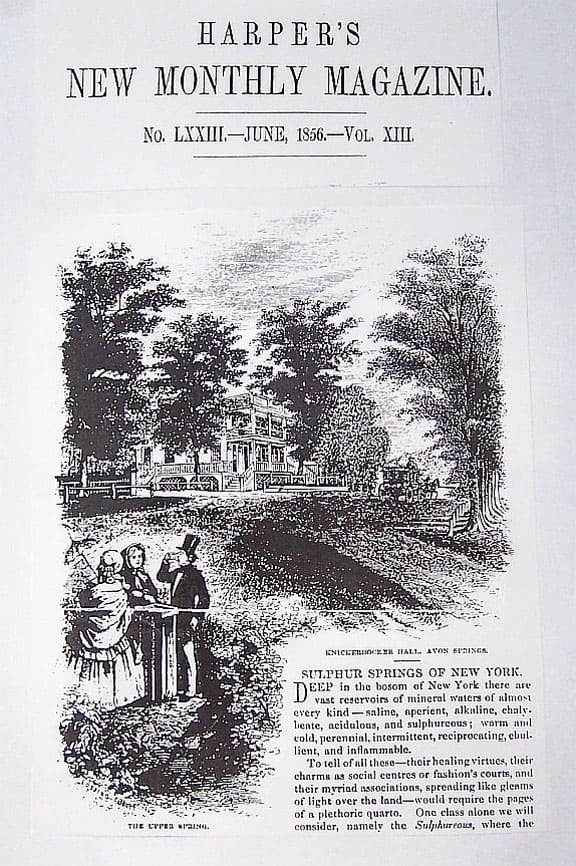A Gravestone Set Right: Julia Wilbur in the Avon, New York, Cemetery
/When abolitionist Julia Wilbur died in 1895 in Washington, her family arranged for her body to be returned to western New York. She was buried with her parents and siblings in the Avon Cemetery in Livingston County.
Wilbur left home during the Civil War to work as a relief agent in Alexandria, Virginia, helping people who had escaped slavery. After the war, she moved to Washington and worked for the Freedmen’s Bureau and for the Patent Office. But she always considered New York home.
A Sad Headstone
In 2015, I was in the Rochester area to do research on what became my biography of Wilbur, entitled A Civil Life in an Uncivil Time. I set out one day to visit the cemetery, which she often wrote about in her diary. Charles Lenhart, a Wilbur family descendant, gave me a map that led me to the family plot. Through a gate, up this hill and that dale, I never could have found it on my own. When I got there, I discovered that, amidst the rest of her family, “she” leaned precariously toward the ground.
Julia Wilbur’s Gravestone, Avon Cemetery, September 2015
It made me sad, but I admit that I didn’t think about how to fix it. Fortunately, at least some things can be made right. In October 2021, a group of area history-lovers planned a tour of the cemetery, and Avon Town Historian Clara Mulligan suggested including Julia Wilbur on the tour.
In prepping for the tour, Stephanie Dempsey, a board member of the Avon Preservation and Historical Society, visited the site in mid-September and came upon….well, you saw the photo above, and that was taken six years ago! She told Ken Rowe of the Avon Cemetery Association. The following week, when Stephanie returned, it was back upright. She cleaned it, and here’s how it looked in October:
Julia Wilbur Headstone, Avon Cemetery, October 2021, Photo courtesy of Clara Mulligan
Seeking Solace in Avon
Julia Wilbur and her family moved to the neighboring town of Rush to farm in the late 1820s, when she was about 14. Her father had an eye disease that left him virtually blind. Her mother died in childbirth in the mid-1830s, leaving Julia to shoulder much of the care for her younger siblings. Life was not easy for anyone.
An 1856 Harpers’s article extolled the sulphur springs of Avon.
She often wrote about going to Avon to visit or attend to errands. She did not mention frequenting one of Avon’s big draws. Visitors cane to Avon’s sulfur-laden springs for that erstwhile 19th century miracle—the water cure. Fourteen large hotels operated in Avon at different times during the century.
While Wilbur never mentioned visiting the Avon spas in her diary, she definitely found rest and relaxation in visiting the cemetery, especially the graves of her mother and other family members.
On March 8, 1861, for example, after a disturbing incident (possibly with other relatives but not specifically described), she wrote:
I [could] endure the business no longer. I went across lots, through snow & slush…. Stopped in the cemetery. Snowdrops budded on Baby’s grave…
On October 19, 1862, three days before leaving New York for her life-changing trip south, and as busy as she was with packing and putting her affairs in order, she carved out time to visit the cemetery:
Went to W. Avon & worked in the cemetery. Our lot is neglected & need work done on it.
19th-Century Cemeteries
Architectural historian Keith Eggener has written extensively about the history and meaning of cemeteries. In his appropriately titled book Cemeteries (W.W. Norton, 2010), he described the transition in 19th century America from small burial grounds next to churches to more rural spaces such as the one in Avon. Mount Hope Cemetery in nearby Rochester, Mount Auburn in Cambridge, Mass., and Green Wood Cemetery in Brooklyn are some of the most famous of these bucolic 19th century cemeteries.
In 2011, Eggener told an interviewer for the Atlantic—
Cemeteries we built for ourselves, increasingly after 1830, were places with winding roads and picturesque vistas. The idea being that you leave behind the mercantile world outside the gates and enter into the space where you can meditate, where you can come into contact with spirituality and concentrate. They were quite important spaces for recreation as well. Keep in mind, the great rural cemeteries were built at a time when there weren’t public parks, or art museums, or botanical gardens in American cities. You suddenly had large pieces of ground, filled with beautiful sculptures and horticultural art. People flocked to cemeteries for picnics, for hunting and shooting and carriage racing. These places became so popular that not only were guidebooks issued to guide visitors, but also all kinds of rules were posted.
According to Clara Mulligan, the rules for the Avon cemetery included bans on eating, drinking, laughing, and running. Definitely no hunting, shooting, or carriage racing.
This undated postcard of the Avon Cemetery depicts it roughly around the time that Wilbur’s own burial would have taken place.
Avon Cemetery, Postcard image courtesy of Clara Mulligan
I’m glad Julia Wilbur is buried with her family—and her gravestone has been set right. Thanks to Stephanie and Ken for doing the restoration and to Clara for letting me know.




